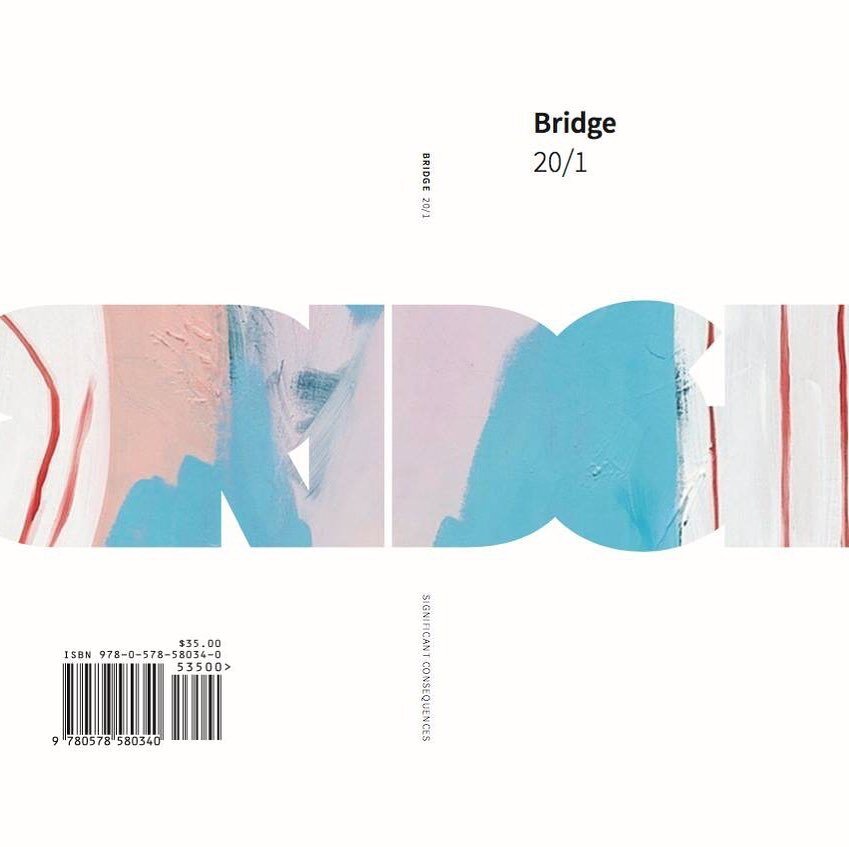Bridge Magazine Inaugural Letter from the Editor
Cover of Bridge Magazine Issue #14, published in 2004. Cover image: “Untitled #2 (Chicago) by Catherine Opie, from her “American Cities” series.
LETTER FROM THE EDITOR
FEBRUARY 28, 2022
By Michael Workman
Three years and two completed volumes of the Bridge Journal into our publishing and programming history since Bridge emerged as an artistic collective, then evolved into a 501 (c) 3 again, it has again coalesced as a point of conversation that much important, thoughtful, sometimes even new groundbreaking art in our fair city is presented, lauded and promptly forgotten.
Unlike our friends on the coasts, Chicago simply doesn’t have the media presence to generate the reviews, previews, interviews, and art historical record needed for the droves of artists who travel to our great city for its academic institutions, its welcoming and often collaborative art culture, for a chance to become an artist, a writer, a thinking, socially-engaged person in a place where the institutions of our society are readily accessible.
Partly, this is driven by the necessary fact of sustainability, which most publications solve by either emerging out of or integrating within those institutions, with all their attendant limitations and vapid political wranglings, or pegging their criticism, writing and media to commercial interests. Chicago has long been recognized for its inordinate focus on economics – there’s a reason they call the Chilean devotees of Milton Friedman’s neoliberal theories The Chicago Boys, after all. The vast majority of our current media is aligned with the goal of selling tickets to this or that event, shifting product, keeping the wheels of the local art-cultural economics greased and turning.
As an artistic collective, we began to look around at this state of affairs, the art that wasn’t even being considered for the first draft of history so important to an artist’s progression, and thought, at a minimum, we were capable of and should do something about it. The Bridge Journal, as a sort of humanist exercise in that metaphor of looking on from a boat at the activity taking place onshore (i.e. in our society) – remains a site of public scholarship, research; a place for surveying new inventions of work in literary poetics, and an archive of the work of the artistic collective that founded it – didn’t seem an appropriate vehicle for meeting these pressing, more topically-focused needs.
Luckily, throughout its long history, Bridge has previously existed both as a journal and a magazine, though never at the same time. At the dawn of the internet, for awhile we published a separate publication for parking shorter deep dives ruminations, and to house the more commercial formats of the review and the preview, but instead of focusing on galleries, on the blockbusteritis and celebrity artist fetishism of museums, a publication focused on those not-for-profit, art center and DIY / project and “alternative” spaces as they were once called. We thought – well, we have the template. Why not simply convert the website into a platform for our magazine? In this process of re-discovering our niche in Chicago’s sorely underdeveloped media ecosystem we decided, as a collective, as a Board of Directors, that this is something we can also do – with the help of a group of devoted writers, thinkers, art-cultural builders interested in an understanding of art situated in appropriate historical context. So, that’s what we’ve done, starting today, with the relaunch of Bridge Magazine, and it feels satisfying to integrate these histories into a single, unified effort all happening together, under one roof.
A few thoughts here on our editorial direction. It’s long been a mournful truism in Chicago that the heights of our popular intellectual discourse should reach their heights in foodie-ism. I mean, wherefore intellectual curiosity in, say, human rights? The institutional equivalent of this cultural current, of course, is what has long been discussed in philosophy and Women’s Study circles as a variant of what’s been discussed for decades using Spivak’s term, “strategic essentialism” – the intentional homogenization of an interest group in a particular way, for a particular goal, and in so doing, often ignoring the authentic experiences of its individual groups and members.
Preaching a rejection of the Modern West and its Enlightenments, this dogma demands a thoughtless, mono-cultural slicing up of into interest groups of queer, indigenous, Black and Brown and Asian communities as itself a pure good, low hanging fruit (who would reject any institution centered on such goals?) presented under a veil of willful ignorance. Personally, I count myself an engaged and interested Socialist Democrat these days. I believe serious corrections are necessary to achieve greater equity and equality. But the current trend toward a reductive, singular focus on a monolithic, strategically essentialist vision of these communities, rooted in the background commercial socio-economic exploitations behind the redlining and long, sad list of similar exclusionary practices, I find intellectually disingenuous and thoughtfully deep as a puddle.
Deeper engagement with our notions of diversity and justice is indeed critical to our advancement as a society and a nation, of course. Embrace of this strategic essentialist approach is simple-minded and dull. In fact, it's halting the degree this reductive strategy has been cynically instrumentalized, a hollow formula employed by numerous publications, institutions, grant-givers, and etc. so much it’s not clear whose interests are being served but those who claim to represent these monolithic constituencies – and no one but themselves at the same time. We can, and should, do better.
More on this later, but as an introduction to Bridge Magazine, we want to assure you we won’t skip the messy, sometimes difficult complexities as we occasionally dock the ship and stride ashore. You, dear reader, and our beloved communities, deserve no less.
Like what you’re reading? Consider donating a few dollars to our writer’s fund and help us keep publishing every Monday.


